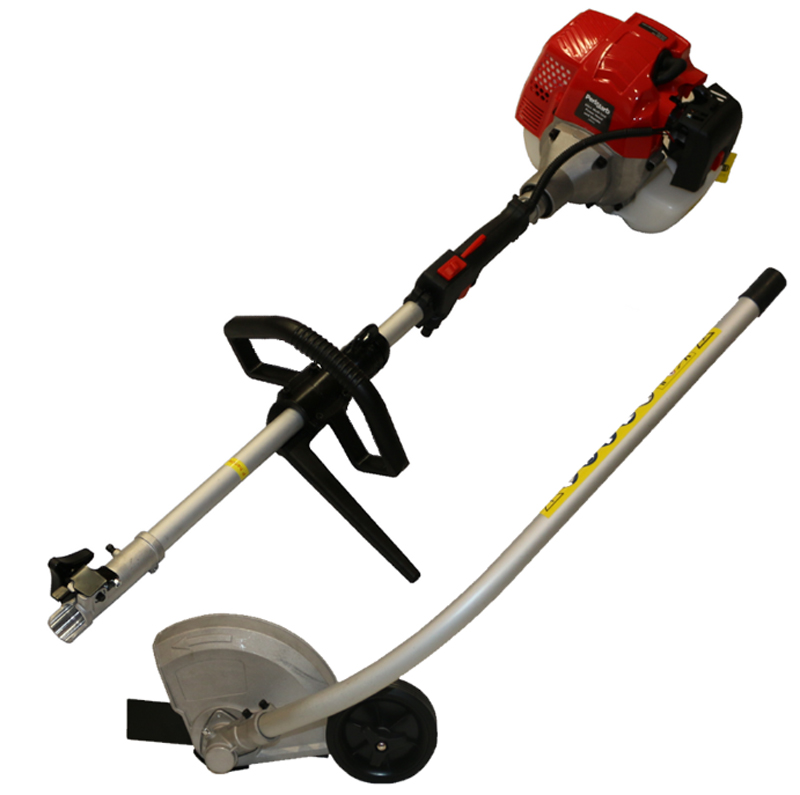Brush cutters are a favourite choice for tidy lawns and gardens - but it doesn't take much to crack a blade. Brushing a stray rock can be enough to send it flying—and you scrambling to replace the blade. Brush cutters need a lot of care to get the job done. Read on for our best tips on how to handle your whipper snipper the right way. You'll need to do regular maintenance to keep your whipper snipper running smoothly. Each task should be performed at regular intervals—and sometimes, there's no getting around a replacement part. When in use, some parts need daily maintenance. Others will need weekly or monthly checkups.  Air filters, trimmer heads, blades, and guards need the most attention. You should replace your air filter every 25 hours of use or when it gathers up too much grime to continue functioning. Dull or damaged blades make your brush cutter less effective and cause excessive vibration. You should do a quick visual inspection before using your brush cutter. Watch out for cracks and check that the blade is centred and sharp. Likewise, the trimmer head shouldn't show any signs of damage. Most guards last for a long time. But they're there for your protection, and you should check for signs of damage and replace them if necessary.  At least once a week, you'll need to clean the spark plugs, cooling fins, and carburettor. You should change the oil every 50 hours or once per season (depending on use). Similarly, you should lubricate moving parts every 25 hours of use to prevent damage and corrosion. To clean the spark plugs, you should remove each and study them, replacing them if they need it.  You should do a complete maintenance routine once per month. You must clean every part, including the fuel tank, fan, and carburettor. The fuel filter prevents dirt and debris from clogging the carburettor and should be replaced after a maximum of 100 hours of use.  The blades are one of the most essential brush cutter parts - if they're in poor condition, your whipper snipper will give you a hard time. To replace them, you'll need to follow these steps:  The three types of brush cutter blades are each suited to a different purpose. Chisel blades are circular with sharp teeth. They're ideal for cutting through tough brush and small trees. However, the blades are expensive and require more power to function effectively. Mulching blades aren't as popular as other types. They're meant (as the name implies) for mulching leaves and can be challenging to find. Knife blades are the most common type. They come with a sharpened edge on the front of each blade and are suitable for all-around purposes. They're generally the most cost-effective option but can quickly blunt if they hit solid objects like rocks.  Correctly storing your electric whipper snipper extends its lifespan. The best way to do so involves the following: If you don't have one already, it's worth investing in an appropriate cover for your brush cutter. It'll do a better job keeping it dry and protected than a household tarp or a blanket.  Even the best brush cutter in Australia won't help you trim your garden if it refuses to start. Common problems with brush cutters include difficulty starting, poor performance, and uneven cutting. If your cutter doesn't start, try the following: Replace old or stale fuel if it's been sitting around for weeks at a time. Poor performance is usually down to a worn blade. Check its edge if your brush cutter is getting bogged down or not cutting well. The blade is probably also the culprit if you're noticing uneven cutting, so replace it if it's bent or damaged.  Regular brush cutter maintenance prevents costly repairs and part replacements further down the line. The key things to focus on are the spark plugs, fuel intake, oil, and air and fuel filters. Dirty or damaged spark plugs should be replaced as soon as you notice signs of wear, and you should clean or adjust the carburettor regularly to ensure the engine runs smoothly.  The oil should be changed at regular intervals to keep it free from contaminants. Most manufacturers spell out how often you should be changing your oil. If you're unsure, you should change it for every 50 hours of running time.  Dirty air filters restrict the flow of air to the engine. They also increase fuel consumption. Check the status of the air filter if the engine isn't performing well.  Using and maintaining a brush cutter can be dangerous if proper safety precautions aren't taken. Here are some important safety tips to keep in mind:  Keeping your brush cutter in working order requires the right tools for the job. At Jono and Johno, we ship chainsaw chains, bars, and spare parts to satisfied customers all over Australia. Click here to visit our store.  Tube Settler Media,Pvc Tube Settler Media,Tube Settler,Tubular Settler Wuxi Qijing Machinery Technology Co., Ltd. , https://www.sinombbrmedia.com
Â
Brush Cutter Maintenance Checklist
Daily Maintenance
Weekly Maintenance
Monthly Maintenance
How to Replace Brush Cutter Blades
Choosing the Right Type of Blade
Best Practices for Brush Cutter Storage
How to Troubleshoot Common Brush Cutter Problems
How to Maintain the Brush Cutter Engine
Oil Changes
Air Filter Replacement
Brush Cutter Safety Tips
Get Quality Brushcutter Parts at Jono & Johno!